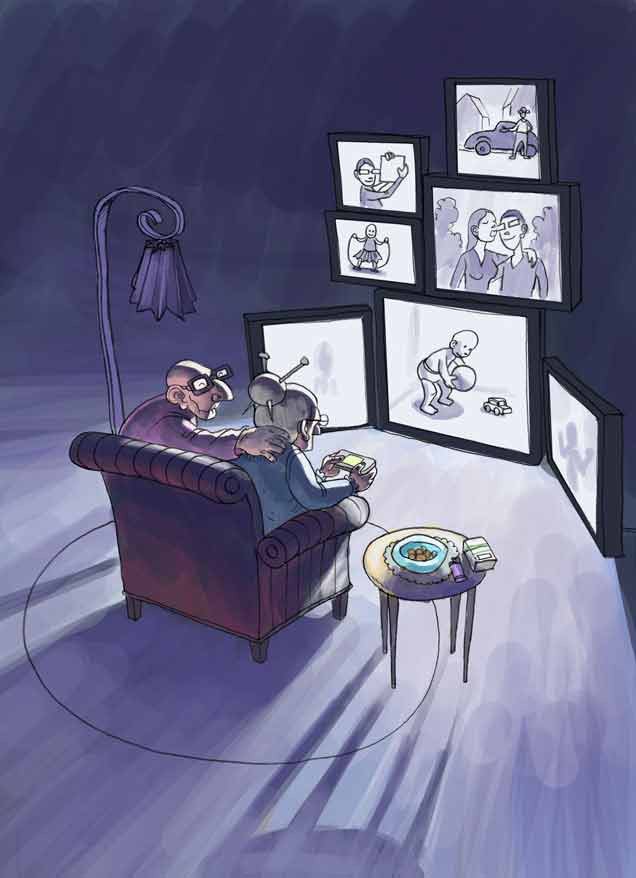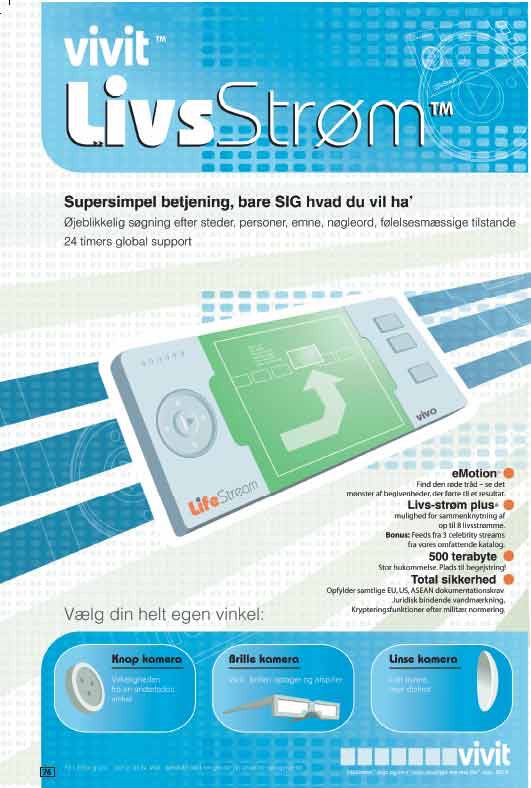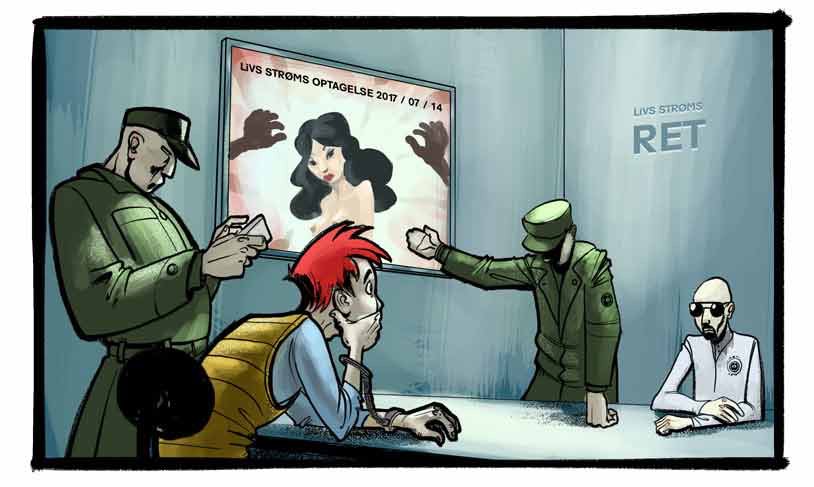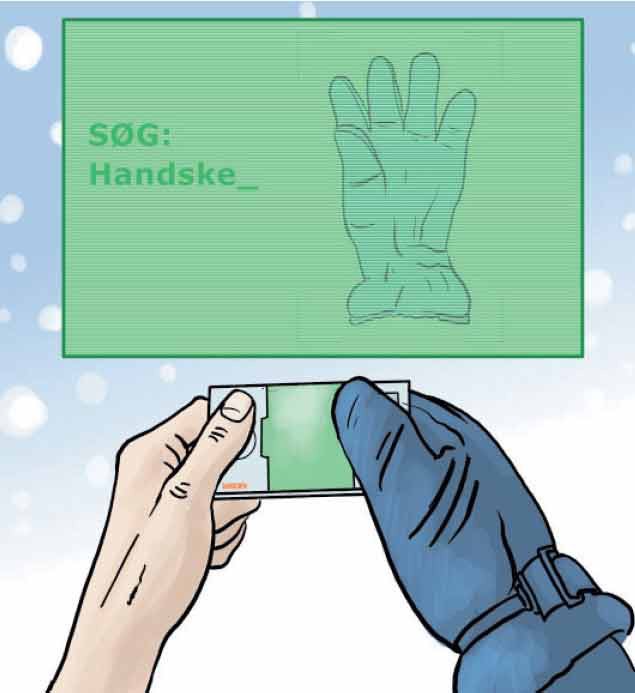
Some of you may still remember the absurdity of the early discussions of the life recorder and of the concept of recording your entire life on video so that you could later go back and revisit any experience you have ever had.
When the concept was later expanded to include the life stream, many people felt positively threatened by the concept. It took quite a while getting used to the idea of gathering every piece of personal data - where you had been, who you had met, what you had purchased, read and listened to - and storing it together with the life-long video recording in a “life stream” that containing basically everything you have ever seen and done.
You could say that the life recorder and the life stream hardly qualify as inventions. They are more like the predictable of the ongoing computerization of practically all aspects of our everyday lives.
In the early years of the millennium, the Apple I-pod gave an indication of the developments that would follow. At the time it was launched this tiny gadget would hold 40 gigabytes of data - allowing its owner to carry with him his entire collection of music and thousands of photographs. Meanwhile, digital cameras boomed, not least integrated as a standard feature in every mobile phone.
Next step was the so-called 3G mobile phones which not only offered broadband internet connection, but also made it possible to record the user's exact position at any time. As from 2008, most people had gotten used to having access to the full potential of the internet at all times no matter where they were.
The basic infrastructure for the life recorder gradually fell into place like the pieces of a puzzle. By 2020, the standard mobile terminal had a 100-terabyte memory leaving plenty of space to store an entire lifetime of video recordings. By then, the speed of the wireless connections had long since reached a level at which you would no longer notice if you stored and retrieved data from the computer's own memory or from the internet.
The technical challenge of creating the life recorder was neither that of recording everything nor that of storing the enormous amounts of data, but rather retrieving specific data once it had been saved.
The breakthrough of the life recorder as a practical everyday tool did not come until sufficiently intelligent automatic record analysis systems had been developed. Initially, the structuring systems were very rudimentary, largely based on comparing recordings with the individual's calendar. You would simply rewind to find meetings, birthdays, vacations, etc. based on the date.
Gradually, the systems grew increasingly intelligent. The recorder's software started registering sudden changes in the sound level, for instance, that might indicate if something important or surprising was happening. The systems also gradually started recognizing laughter, crying, arguments and caresses, and it began combining the many types of data in an actual life stream.
Today, the data are categorized with such precision that you can search any event of your life as easily as you search for a particular word in a text document.
We simply take it for granted that amongst the myriad of minor and major events of our lives, we can backtrack to where we lost our keys, review the painting we saw any given Sunday years back, the number of times you have tried putting a saddle on a horse or the number of times we have met one particular person.
The Early Examples
An early prototype of a liferecorder was the “casual capture” concept from HP, the computer conglomerate, dating back to around 2004. The user would carry a special, slightly heavy, pair of glasses with a built-in video camera.
The idea was to try and capture the many major events in life that would otherwise be lost. The first smile of the newborn baby, funny, breathtaking or touching situations - or maybe a crime you happened to witness.
Microsoft also contributed to defining the early sketches of the life recorder and the life stream. MyLifeBits project, sponsored by the US army as from 2003, was designed with the specific purpose of gathering and structuring the digital data any person leaves behind. The researchers at Microsoft used themselves as guinea pigs and gathered photos, recorded telephone conversations, saved all e-mails and recorded every website they ever visited, the books and magazines they read, the music they would listen to and the TV programs they watched.
Nokia's Lifeblog was yet another pioneer project from the same period.
Nokia was the world's leading manufacturer of mobile telephones, but the company's researchers already then preferred to use the term “mobile terminals” as they realized that telephony was increasingly being reduced to merely one out of a large number of functions available via the digital device that everybody would invariably carry with them at all times.
Nokia pointed to the fact that a mobile phone contained a large amount of data on the life of its user, and they looked into various ways of enhancing and facilitating the gathering of information, for instance by making it easier to record spoken notes, organizing pictures and video recordings via the telephone.
Long before that, however, the ordinary PC was already keeping a fairly exact record of the user's life. Even if most people were not aware of level of detail that their devices revealed about them, police experts were certainly very conscious of how much any person's hard drive would show about its user's interests and activities.
My Life, An Ongoing Reality Show
The life recorder continues a concept under steady development and the - at times - very heated discussions about its implication seem to lead to no conclusion. Each new step towards a more comprehensive and complete picture of the time and place that we live in invariably takes us through a mine field of ethical, legal and financial dilemmas.
All we can say for certain is that the life recorder has turned our traditional values in terms of privacy and public life upside down.
The practical applications of the life recorder sprang from a variety of sources. Some professions made it a business condition that everything be documented in order that responsibility for any accidents could be immediately placed - just as the terms of a spoken agreement would be precisely recorded and hence binding. Doctors and policemen were among the first users together with lawyers, politicians and businessmen.
The military also invested in the development of systems that would not only make it possible to make post-crisis analysis, but which would also often make it possible for the officers to retrieve and analyze data from the soldiers' life recorders while they are still in action and hence plan their strategy accordingly.
Ziggy Smartdust, the retro rock icon, was among the first to make the data of his entire life stream available to the general public thereby allowing everybody to keep track of what he was doing. Originally, his idea was to provoke the world to understand that the privacy of the individual was at stake. However, it soon became a new and extremely popular entertainment show instead. Today, it is largely a must for celebrities to offer some kind access to his or her life stream.
To fans and followers this access provides a very intimate glimpse of the artist's or the politician's reality. Many celebrities earn the larger part of their money this way - having others peek into their lives. Their lives have become one long performance.
This trend has now spread to the more general public. Especially among teenagers, the concept of opening up your life stream to another person, girlfriend or boyfriend seems to add a special dimension to the relationship.
Malene and Ivan are both 19 years old, and they opened their life streams to each other nine months ago. “Sometimes I can hardly tell whether it's Ivan or I that have a particular experience. We see the same things - it's like we melt together completely. It's a wonderful feeling of sharing everything openly and in complete trust”, says Malene.
The Fight For Access
The problem obviously is that you do not necessarily want to share everything. One of the major issues these days is that of handling access - whom do we want to give access to which data. We know that largely all aspects of our lives are registered at a still higher level of detail. The quest now is to maintain control of the data.
One of the challenges is that data - originally gathered for one particular purpose - may at some point in time prove infinitely more interesting for other purposes. Countless politicians, for instance, have been faced with statements and opinions that they aired years ago. In connection with the presidential elections in the USA, it has long been a well-established routine for the campaign management to hire personnel whose only job is to hack into and search as much of the opposing candidate's life stream as at all possible. This strategy is being adopted by most modern societies, and quite a few hopeful European politicians have seen their dreams fade away once their life streams revealed things that were too contradictory to what they claimed to be their true values.
Ordinary citizens, however, also come under increasing pressure to give others access to their life stream. It is a fact of life that employers tend to try to seek an analysis of the job applicant's life stream. Many applicants include some access to their life stream up front - and this obviously makes it harder for other applicants to refuse access. Similarly, most insurance companies today offer their services at a premium to those who grant the company access to analyze their life stream.
A few countries in Asia have even introduced specially priced medical insurance to those who allow the insurance company to monitor their life stream on an ongoing basis to certify that the person in question does in fact live up to the terms of the policy regarding “sensible lifestyle”. This type of “conditional insurance” is not allowed outside these few countries - yet - but since digital data know no boundaries, many Europeans have already signed up for these conditional insurance policies with Asian insurance companies.
You Are Constantly ON
There can be no doubt that the life recorder has prompted a new type of social responsibility. Critics have compared the life stream with the scarlet letter. As a philosopher noted, it is a system without forgiveness:
“If you make a mistake, it will stay with you eternally. The concept of trial and error will be lost forever. We lose our freedom to explore the unknown aspects of life if everything we do and say can be used against us later in life. Life will be boring when we censure our own actions. We will stay put, we won't yell or rebel. We will avoid everything that may give rise to problems - we have a long life ahead of us, and you never know …”
The life recorder has changed the concept of time. Today, the past, the present and the future interact far more directly than was the case only a few decades ago. The past is never distant when you can locate and replay any given moment of time. The past has become an active tool, like an expanded memory. If we forget something, we will just revisit it. It is hard to imagine how we would get along without the convenience and precision of this tool
The future, too, is much more present in our minds because we know that what we do today will be with us forever. The future, so to speak, casts a shadow on the present.
A 35 year-old high school teacher put it like this: “You are constantly ON. It is impossible to not constantly have in mind that what I do right now will be on my record always. Sooner or later, I - or maybe somebody else - will go back and study the details. It's like being an actor in a movie, only you don't know who will watch it or which parts they will watch.”
Is That What It Was Really Like?
Again, critics point to the fact that our spontaneity is in danger. Dates have become the classic example of the dilemma of the life recorder. It would be a wonderful experience for any married couple to go back in time and re-experience that special moment when you fell in love with your life's companion. But then, how would you ever find the courage to break the ice, when you know that everything is being recorded?
As every user of the life recorder knows, not all the crucial moments of your life are worth revisiting.
Human memory is not objective. We elaborate on our memories, we interpret, embellish, add and deduct. But the data on our life recorder remain forever unchangeable and objective. It is a shocking experience to revisit a factual memory that is completely different from your own mental memory.
The life recorder and the life stream have inevitably led to a variety of new and very creative types of criminal behavior. An entire new criminal category has emerged around forging or adjusting life streams. Not many of us can truthfully say that we have not edited or erased data.
Actually, every one of us is free to stop the recording or encrypt our data. However, we all know that too many blank spaces in the life stream will arouse suspicion - especially if they show up in connection with major events.
Unfortunately, we are faced with the growing problem of criminals and simple hooligans - often from far away places - that hack into and change or erase a person's life stream. Not only are the victims of such behavior faced with enormous trouble and financial losses, but often they also suffer a violent psychological trauma from having their identity either manipulated or even erased.
The life recorder and the life stream have become natural elements in our everyday lives, but they also have an impact after death. What do we do with the life stream when a person dies? Do we erase it? Does it belong to the family of the deceased? The life recorder shows beyond any doubt that our lives and our life streams are increasingly intertwined across time and place.
Text: Peter Hesseldahl